One of the sadder things I realized when I upgraded from DX to full-frame, and replaced my Nikon D3200 with my new Nikon D600, was that my Raynox DCR-250 no longer fit on any lens I had. Sure, it would go on the 24-85mm f/3.5-4.5G, and would also fit on the 50mm f/1.8, but the vignetting was horrible in both cases.

Automatic Extension Tube Set DG
Extension tube set for Canon, Nikon (tested) and Sony.
- Specifications
- Nikon G Aperture Control
- Yes
- Electronic Contacts
- Yes
- Nikon AF-S
- Yes
- Nikon AF
- Yes
- Lengths
- 12 mm
- 20 mm
- 36 mm
A cheap and portable way to get macro shots. (5/5)
So I started looking for alternatives, and found one in extension tubes. These are just what they sound like - a tube filled with extra light, aspherical, low-dispersion air, that goes between the lens and the camera. By doing so, they lower the close focus distance and thus enable you to get the lens much closer to the subject that you otherwise would.
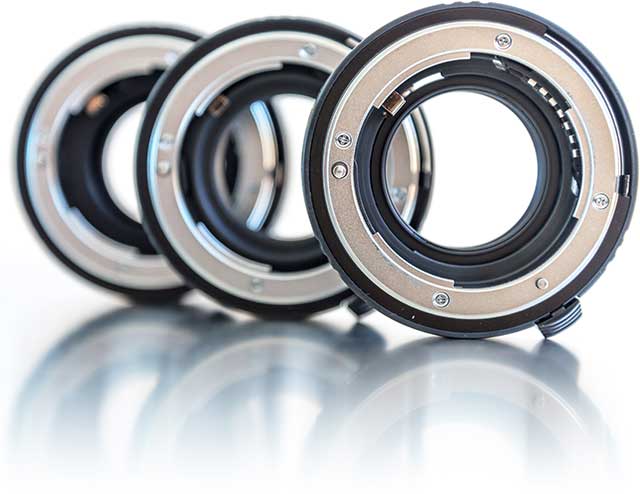
There are a number of types of extension tubes. Some are just tubes - they are hollow cylinders with a lens mount in one end and the corresponding bayonet in the other. Others have pass-through electrical contacts for lens data. Yet others - for Nikon G lenses - have mechanical aperture control as well. This set is of the latter kind with both electrical contacts and aperture control, making any lens work just as if it were directly attached to the camera.
1. Samples
All samples shot with a Nikon D600, the 20mm extension tube and a AF-S Nikkor 24-85mm f/3.5-4.5G ED VR[a].
Here are some 100% crops from the centers of some photos:
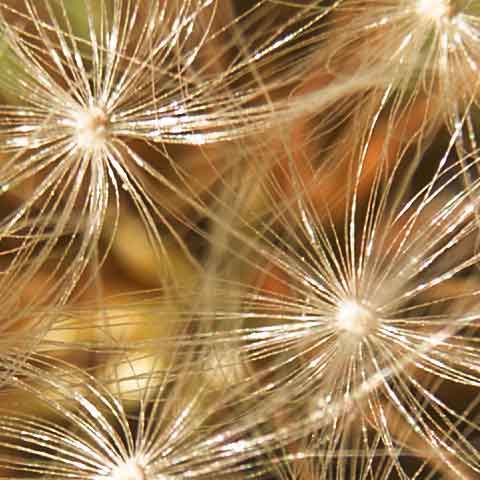
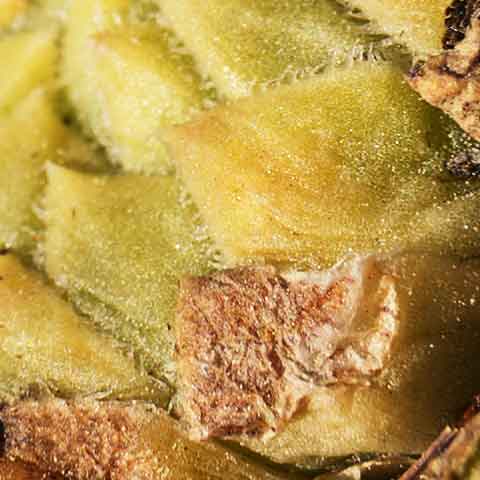
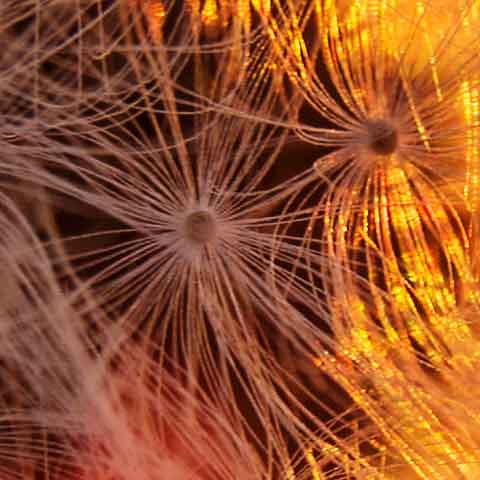
2. Usage
Of the set of three, I found the 20mm tube to be the most useful. The 12mm just didn't give enough effect (although you can decide for yourself with the Extension Tube Calculator), and the 36mm was overkill for anything handheld with the 24-85mm lens. It also fit nicely in my backpack, not taking up much more space than the Raynox DCR-250.
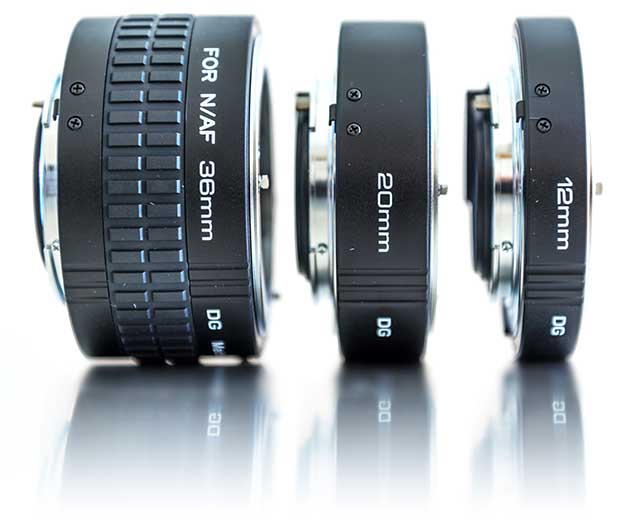
The combination tube + lens + focal length doesn't just give you different magnifications, but also different working distances. The effect of various lens adjustments have non-intuitive results as well. Increasing the focal length increases the working distance, but also reduces the magnification - the latter of which is the opposite of what you'd expect from "zooming in": the close focus distance increases faster than the lens zooms in. Zooming out increases the magnification, since the close focus distance approaches faster than the lens zooms out.
After playing around with it for a while I settled on a 20mm extension tube and around 35 to 65mm focal length, with most shots ending up around 50mm. This gave me a comfortable working distance and a magnification around 1:2, which made it possible to hand-hold the camera even when the subject would sway a little in the wind.
Finally, I settled for attaching the 20mm extension tube to my 50mm lens, and using the resulting combination as a "50mm macro" lens. The extension tube was kept on, and the lens plus tube was used as if it had been a specialized lens. It was much easier to switch from, for example, a 24-85mm lens to the "50mm macro", than to get the 20mm extension tube from my backpack and fit it between the 24-85mm and the camera - never mind switching from a 15mm to a 24-85mm and extension tube. Granted, it meant that I had to lug around a 50mm lens as well, but the Nikon 50mm/1.8 is very light at 190g.
3. Summary
A relatively cheap and very portable way to get macro shots, the Kenko Extension Tube Set is easy to use and essentially just drops the close focus distance of your lens, leaving everything else working as you would expect it to.
Links
https://www.nikonusa.com/en/nikon-products/product/camera-lenses/af-s-nikkor-24-85mm-f%252f3.5-4.5g-ed-vr.html |



